2023 Taiga Orca Performance Review

The real deal
Motor: Taiga 120 kW Tractive Unit/Sealed Lithium Ion Battery
Range: Up to two hours
Storage Capacity: Approx 9 gal.
Seating Capacity: 2
MSRP: $19,490
Taiga Motors Orca Performance is the real deal. An electric personal watercraft that produces zero emissions, zero noise and zero smell. Unlike Taiga’s first carbon-fiber based model, it also offers a more affordable composite construction and, dare we say, more bang for the buck.
But does it live up to current standards set by its gas-consuming competition? And is keeping a PWC charged and ready to roll something the consumer is ready to commit to?
Read on.
Back To The Future

At first glance, the Orca Performance doesn’t look drastically different from many past and current gas-powered offerings on the market. Bow, handlebars, seat, footwells, hull…none have reinvented the wheel. The craft does, however, have a decidedly sleek flair. There’s virtually no graphics or logos to speak of, save for a simple, understated badge forward and subtle logos on saddle and stern. Colors reflect a simple but modern aesthetic, with the base model swathed in a solid white and black. A slim saddle cantilevers over the aft deck, reminiscent of Sea-Doo’s HX. Bells and whistles maintain the minimal-but-modern feel. A throttle and reverse lever are found in expected positions on the handlebars. A rectangular display is integrated directly into the handlebar pad.
Hit the start button, however, and the Orca immediately feels different than current offerings. Probably because, other than the display coming to life, nothing appears to happen. I almost hit the button a second time before I remembered that silence is a large part of an electric motor’s appeal. Apply throttle and that silence is interrupted only by the whirl of the driveshaft. But that, and water striking the hull, are the extent of any noise. Release the throttle and the craft coasts quickly to a stop and goes quiet and still. Unlike other PWC, with a driveline constantly spinning and thrust having to be redirected by a reverse bucket, the Orca driveshaft simply stops moving. Grab the reverse lever and it also does something unconventional, spins the driveshaft in reverse.

The latter takes some getting used to. As the impeller is simply spinning the opposite direction, the Orca moves backward but lacks the directional control provided by a reverse gate to deflect the thrust. I quickly found I would back up, reset the desired angle with a bump into forward, then back up again for best results. While futuristic in style, I also found the ergonomics closer to a Sea-Doo Spark than modern flagships. Posture is rather upright. The saddle is streamlined, but lacks any significant bolsters.
Electric Avenue

Grab a handful of throttle, however, and Taiga’s 120 kW “Tractive Unit” electric motor certainly struts its stuff. One of the benefits of electric motors is that they produce almost instantaneous torque. It’s apparent, as the Orca Performance shot forward with the powerful acceleration and aggressive feel of a performance model. As to top speed, the current motor setup pushes the craft to about 62 mph, comparable to the best current midrange gas models on the market.
Tiaga’s 120 kW motor produces the equivalent of 160 horsepower. Runtime provided by the sealed lithium-ion battery is determined by how hard you tax the motor. Three modes are available to alter the response and, in turn, runtime and range. Easily selected by a button on the handlebars and verified on the 7” display, they include Range, which limits the power to 40 kW; Sport, which ups the ante to 70 kW; and Wild, which puts the full 120 kW at a rider’s disposal.

Range is rather tame, but maxes out battery life. Sport is a nice compromise, offering solid overall performance. Wild is, as the name implies, a lot of fun but resulted in the battery percentage dropping steadily at full throttle. Taiga currently estimates that range can be up to two hours.
Plug-to-Play

How long is the downtime between play sessions? The answer, like with electric cars, depends on the charger. With the included adapter, the Orca can easily be charged on normal 110-volt household current (Level 1 charging) but take up to 20 hours to go from depleted battery to full charge. The better option, 240V Level 2, shortens that time to 3.5 hours. Current electric vehicle owners have likely already installed Level 2 chargers in their home. Taiga’s unit runs $649 but keep in mind you’ll likely have to pay an electrician to install it. Marina shorepower is also readily available and will produce similar charge times to Level 2. Level 3 Charging, like Tesla’s supercharger network, shortens charge time to a mere 30-40 minutes and can be relatively easily found in places like malls, highway rest stops, larger convenience stores, etc.
As to other concerns, electric vehicles have already proven reliable in wet conditions, so it’s no surprise that Taiga’s fully-sealed battery promises to handle freshwater, saltwater and vibration. The Orca’s closed-loop cooling system also keeps out contaminants, and does not require any flushing after even salty rides. A possibly overlooked but decidedly cool feature? The Orca has its own LTE, WiFi and Bluetooth connection, and can receive software updates much like an iPhone.
Buzzworthy Impressions

Ultimately I found the Orca Performance a fun overall ride. My concerns were less about reliability and the details of charging, but more about a few tradeoffs in handling.
The battery, one of the heaviest elements in the boat, is placed deep in the hull to keep the center of gravity low and below the driver. Still, I found the actual hull (made of a sheet-molded composite that felt much like Sea-Doo’s PolyTec) to be somewhat loose at first, drifting slightly into turns before suddenly hooking up at a pivot point that felt forward of my position in the saddle. The craft also seemed to run more level or even bow down than I would have liked in corners, generating some bow spray. For those used to dropping a PWC’s bow for better hookup in corners, you might want to consider trimming up on the Orca.

Storage is also minimal. The bow tub has a capacity of only about 9 gallons. The glovebox area houses the charging connection, with just enough room for a phone.
Still, I rate the Orca a solid contender overall, especially for those eager to embrace electric power. The ride is fun, the motor’s silence is refreshing, and charging times make it realistic to have a fun morning session, throw the craft on the charger while you work or eat lunch, then enjoy another afternoon or evening ride.
It’s the first plug-and-play PWC. But you can bet it won’t be the last.

Get PersonalWatercraft.com in your Inbox!
Like PersonalWatercraft.com on Facebook
Related Stories
Comments
Most Popular

Remembering the Sea-Doo XP

2025 Yamaha JetBlaster PRO 2-Up Review

2024 Kawasaki Jet Ski STX 160X Review

2024 Yamaha GP HO Review

2017 Kawasaki Jet Ski Ultra 310LX Review

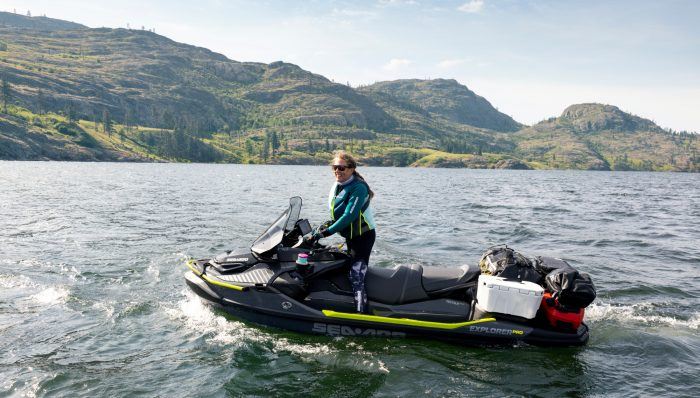
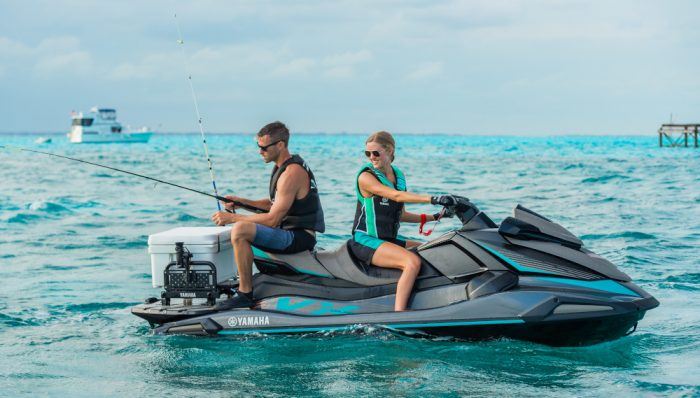
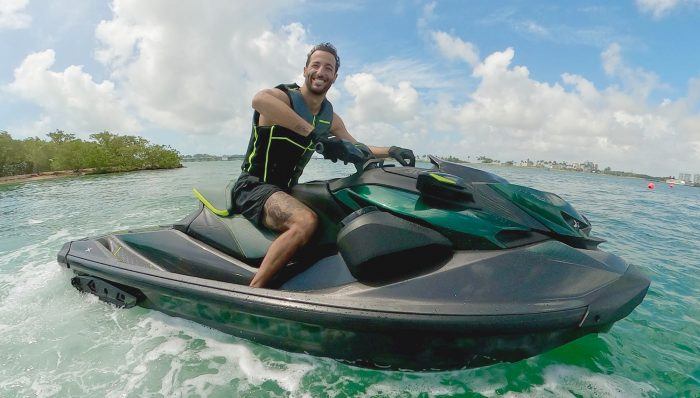
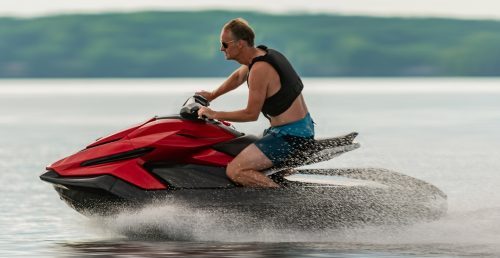


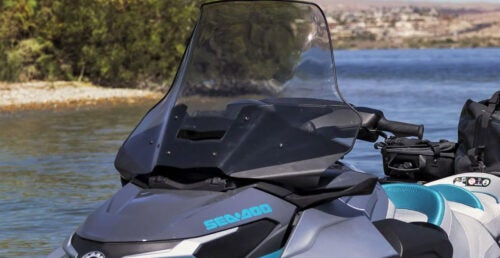
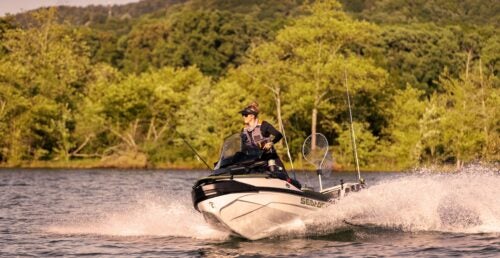


 Your Privacy Choices
Your Privacy Choices